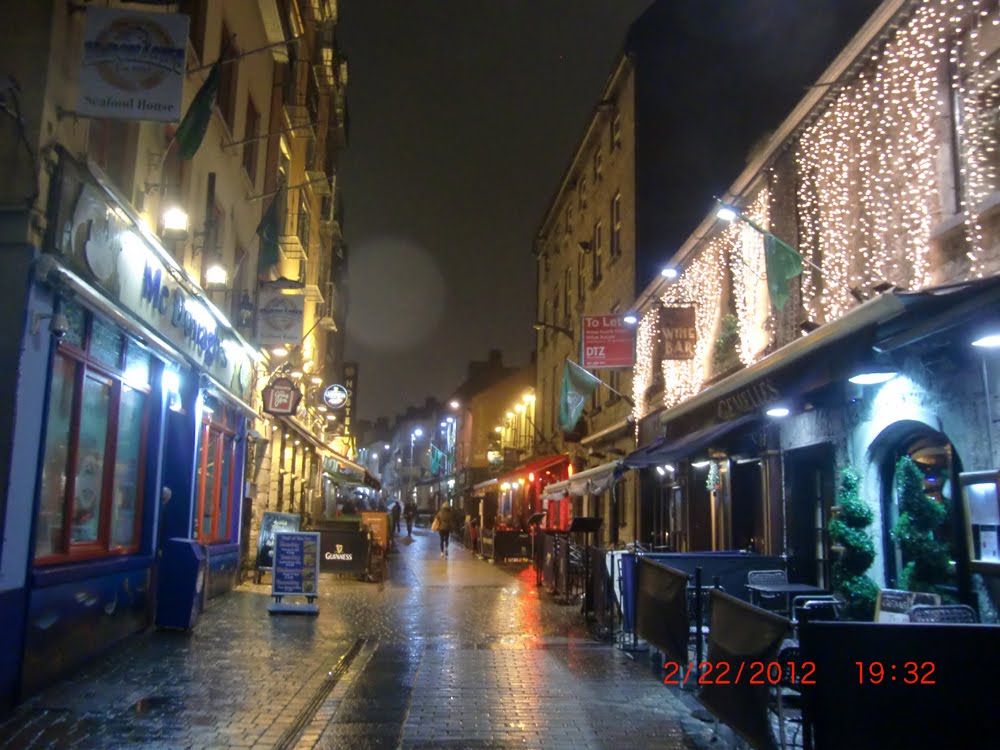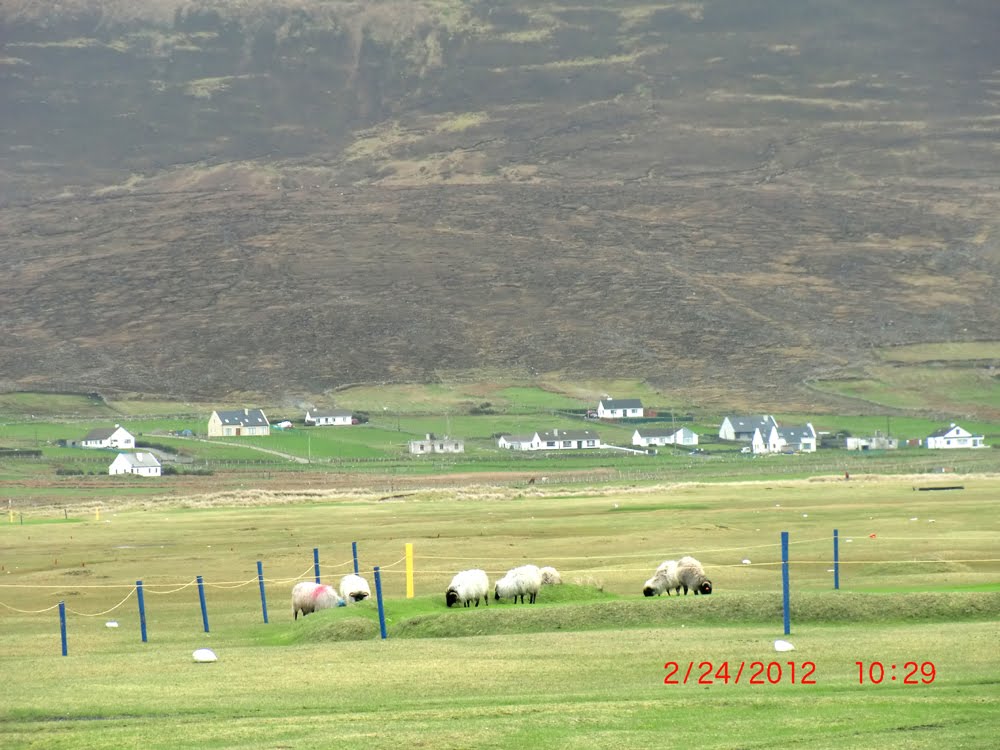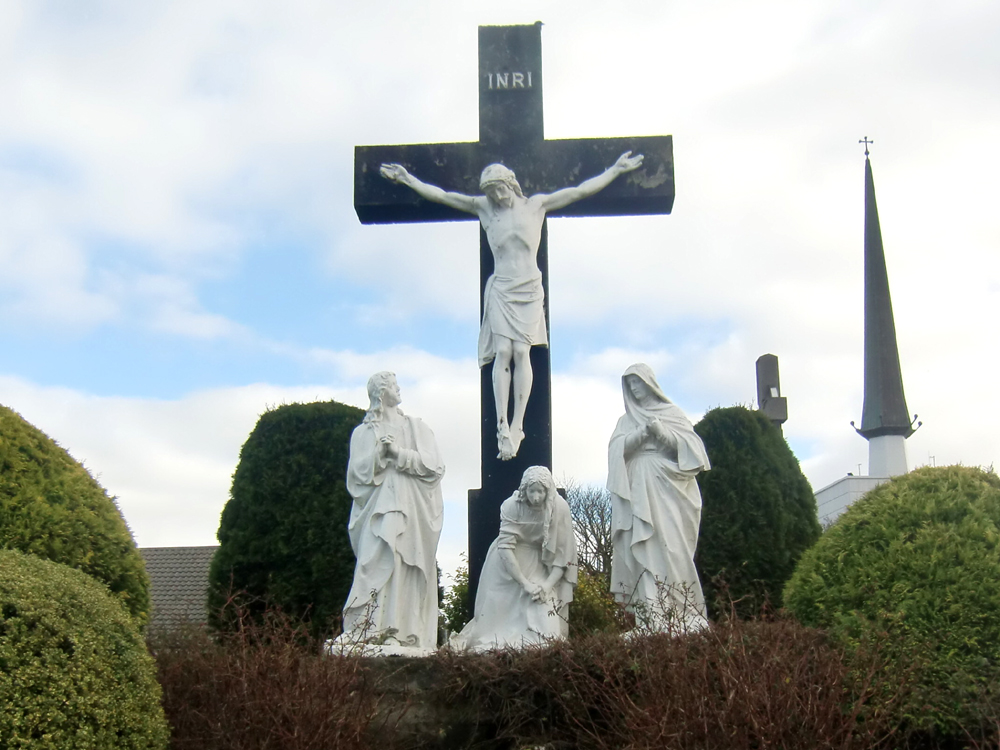FEBRUARY 22
Bunratty Castle***County Clare***Dunguaire Castle***Abbey View B&B***Galway
After we checked out our first stop was at
BUNRATTY CASTLE (Irish:
Caisleán Bhun Raithe, meaning "Castle at the Mouth of the Ratty") in County Clare. We proceeded next to the Cliffs of Moher but it was too foggy so we drove on and passed by another little castle. Along the shores of Galway Bay, we passed by the
DUNGUAIRE CASTLE (Irish:
Dún Guaire) built in 1520 and in 1924 became a venue for meetings of the literary revivalists such as W.B. Yeats, his patron Lady Gregory, George Bernard Shaw, Edward Martin and J.M. Synge.
After getting a little lost we finally arrive at the
ABBEY VIEW B&B where the host Bernie McTeague warmly welcomed us with tea and cookies.
Bernie suggested dinner at
McDONAGH's in Galway City. I enjoyed their Fish and Chips. Walking later on
Quay Street we stopped in at an
IRISH PUB and listened to Irish musicians. On the way back to the car, we passed by
OCCUPY GALWAY and I chatted with some of the demonstrators in one of their tents.
FEBRUARY 23
Cliffs of Moher***Poulnabrone***Kylemore Abbey***Boffin Lodge B&B
Breakfast was nice and Bernie talked us into going back to the
CLIFFS OF MOHER (Irish:
Aillte an Mhothair) located at the southwestern edge of the Burren region in County Clare. The fog has cleared up a little and saw the cliffs which were between 400 to 700 feet above the Atlantic Ocean.
The
CLIFFS OF MOHER and the
BRANAUNMORE sea stack would have been much more spectacular like the pictures below had the weather been really clear.
POULNABRONE DOLMEN (Irish:
Poll na mBrón, meaning "the hole of the sorrows") is a portal tomb in the Burren, County Clare, dating back to the Neolithic period, probably between 4200 BC to 2900 BC. The Burren (Irish:
Boireann, meaning "great rock") is a karst-landscape region or alvar.
By the time we arrived to visit the
KYLEMORE ABBEY it was almost closing time. Kylemore, located in the heart of Connemara, County Galway, is home to a community of Benedictine nuns who purchased it in 1920 and converted it into an abbey after the destruction of their abbey in Ypres, Belgium in World War I. The Castle was built by Mitchell and Margaret Henry from 1867 to 1871. In 1903, Mitchell sold Kylemore Castle to the Duke and Duchess of Manchester.
As it was starting to get dark, we headed for the
BOFFIN LODGE B&B in Westport, County Mayo. We later went to dinner in town.
FEBRUARY 24
Achill Island***Knock Basilica***Clonmacnoise***Dublin Hotel
Our breakfast this morning and the source of the eggs!
First stop this morning is
ACHILL (Irish:
Acaill, Oileán Acla) Island in County Mayo, the largest island off the west coast of Ireland, attached to the mainland by Michael Davitt Bridge, between the villages of Gob an Choire (Achill Sound) and Poll Raithní (Polranny). The island is about 87% peat bog.
From there we drove to
KNOCK (Irish:
An Cnoc, meaning The Hill – but now more generally known in Irish as
Cnoc Mhuire, "Hill of (the Virgin) Mary"), a village in County Mayo, the site of the
KNOCK SHRINE, at which the Virgin Mary, together with Saint Joseph and John the Evangelist, supposedly appeared on 21 August 1879. One of Europe's major Catholic Marian shrines, alongside Lourdes and Fatima, 1.5 million pilgrims visit Knock Shrine annually. Pope John Paul II visited Knock in 1979 to commemorate the centenary of the apparition.
The monastery of
CLONMACNOISE (Irish:
Cluain Mhic Nóis meaning "Meadow of the Sons of Nós") in County Offaly, on the River Shannon, was founded between 545 and 548 by St Ciarán. The
Cathedral,
Temple Doolin, and
Temple Hurpan are three of several churches on the site and nearby is the ruins of the
Clonmacnoise Castle. Until the 9th century it had close associations with the kings of Connacht. From the ninth until the eleventh century it was allied with the kings of Meath. Many of the high kings of Tara and Connacht were buried here.
Heidi and Linda with the
Temple Finghin and McCarthy's Tower in the background; the tiny
Temple Ciarán (early 900s), and the
north door of the Cathedral with the sculpture of saints.
Inside the museum was a
wooden church replica, the
Cross of the Scriptures, and an
early Christian graveslab among many from the site.
We drove on to County Dublin to our hotel in the outskirts of Dublin where we will be based while exploring the city and the nearby counties of Meath and Wicklow.













































No comments:
Post a Comment